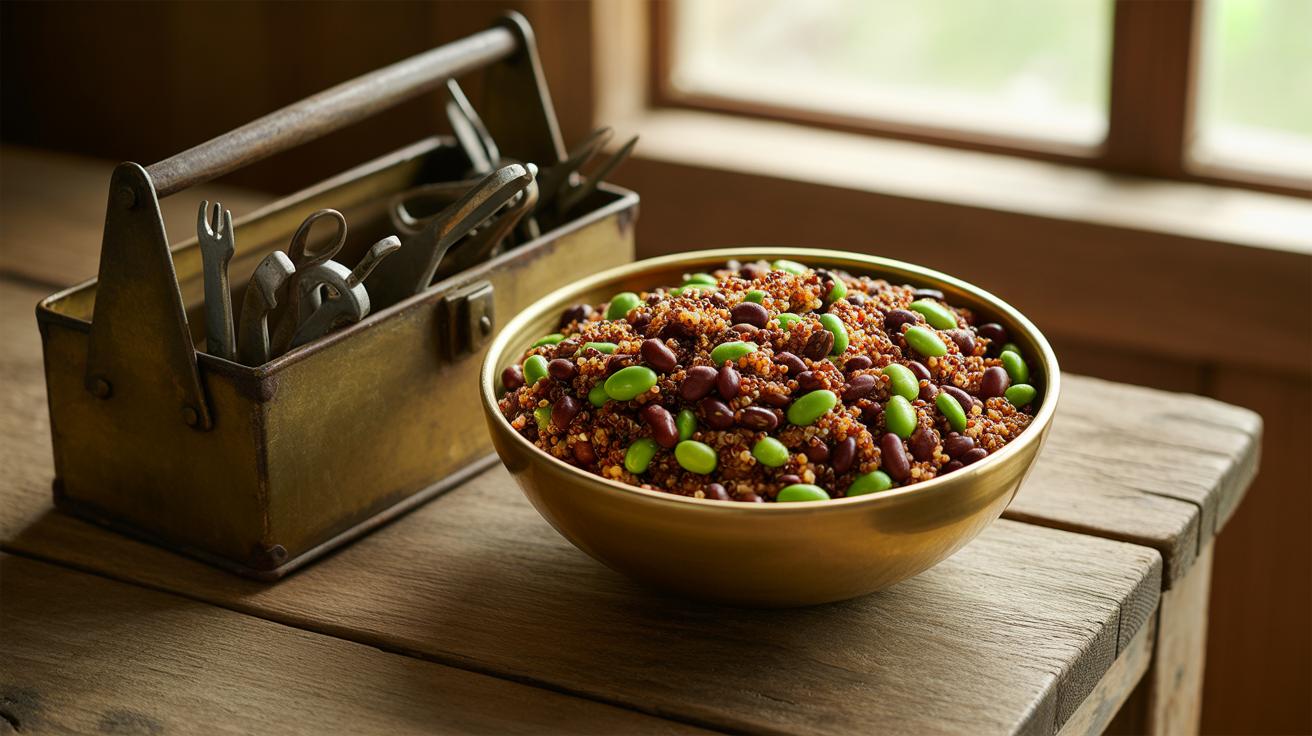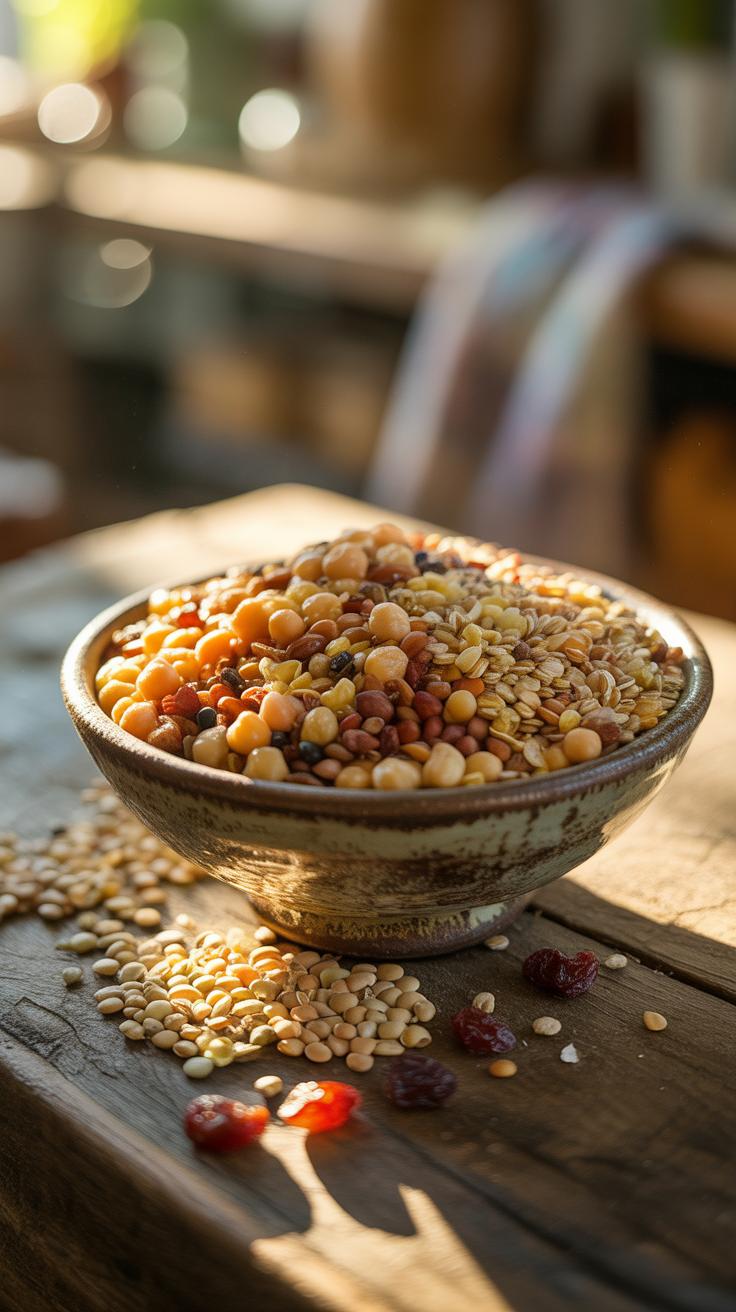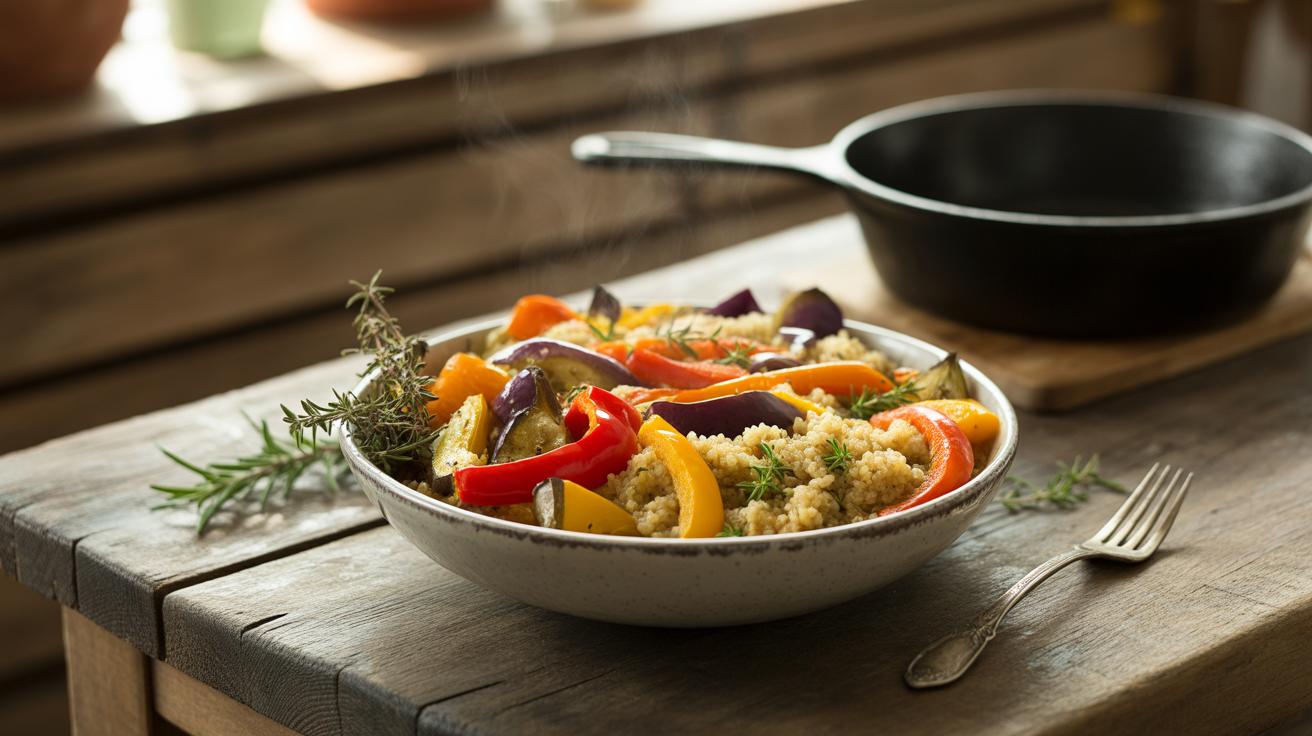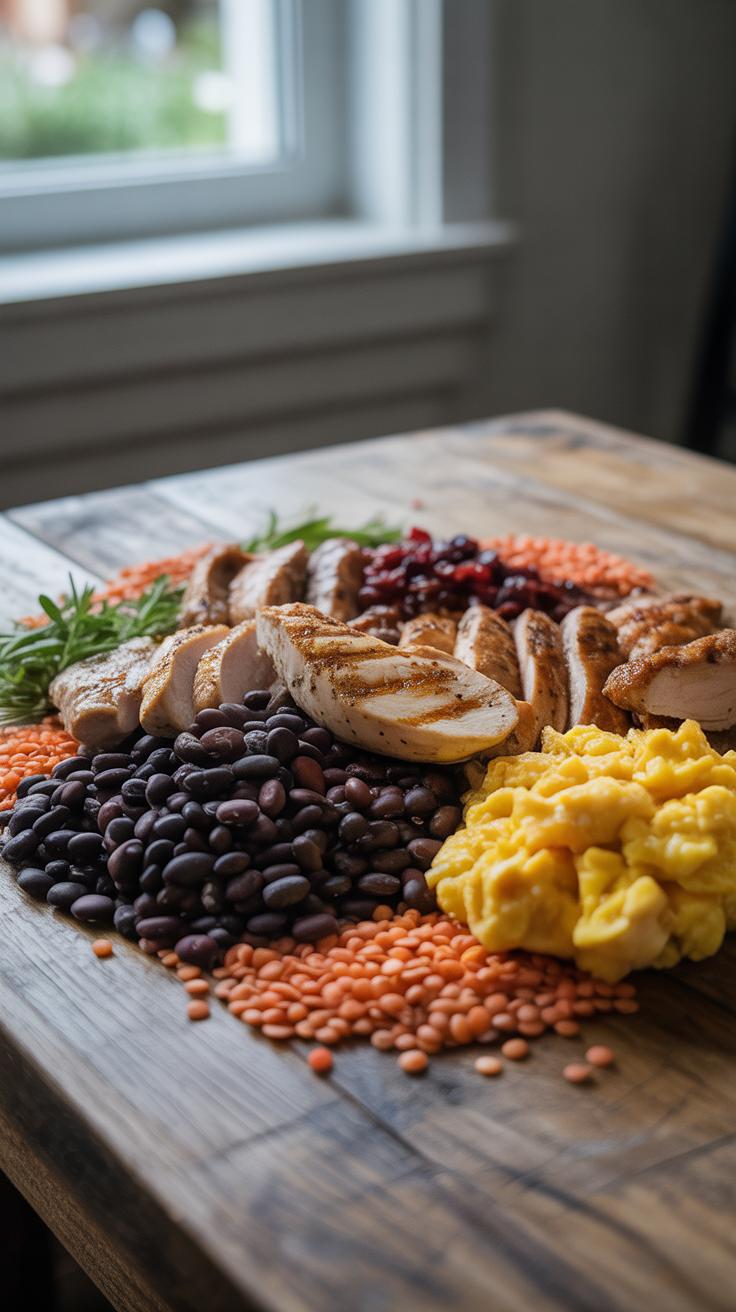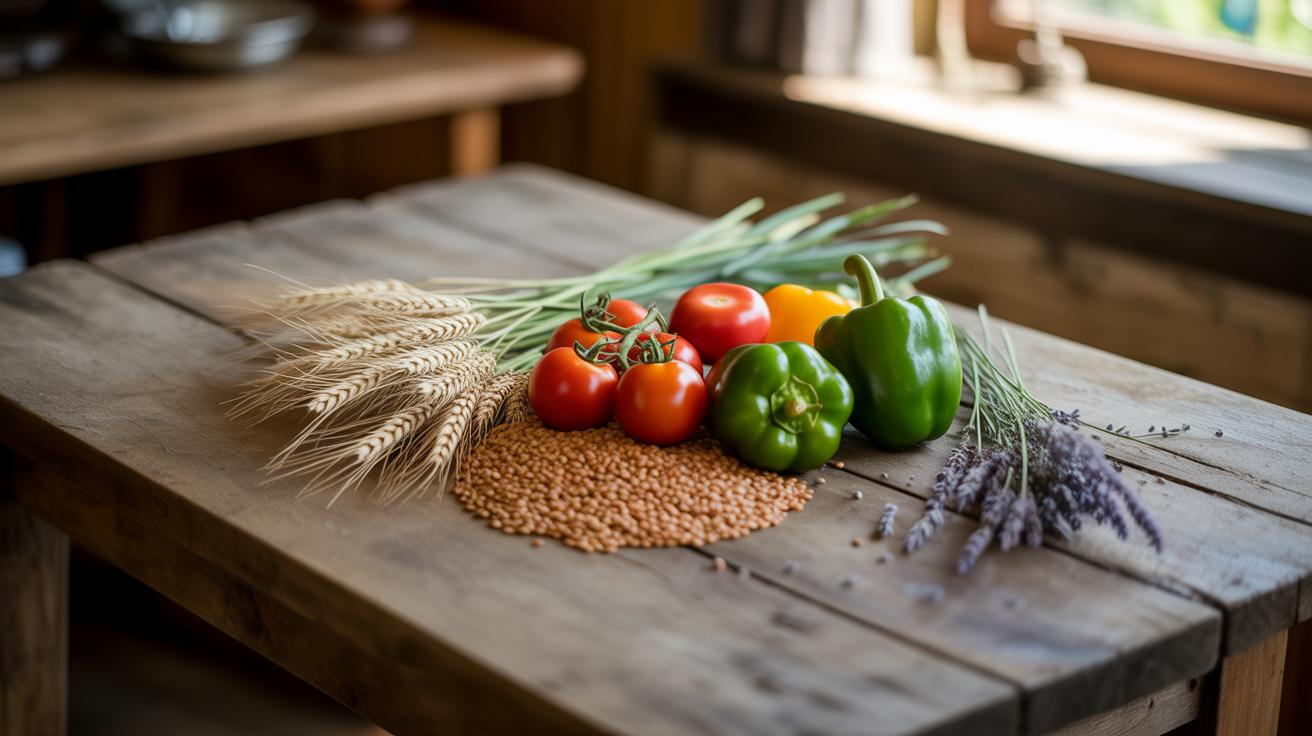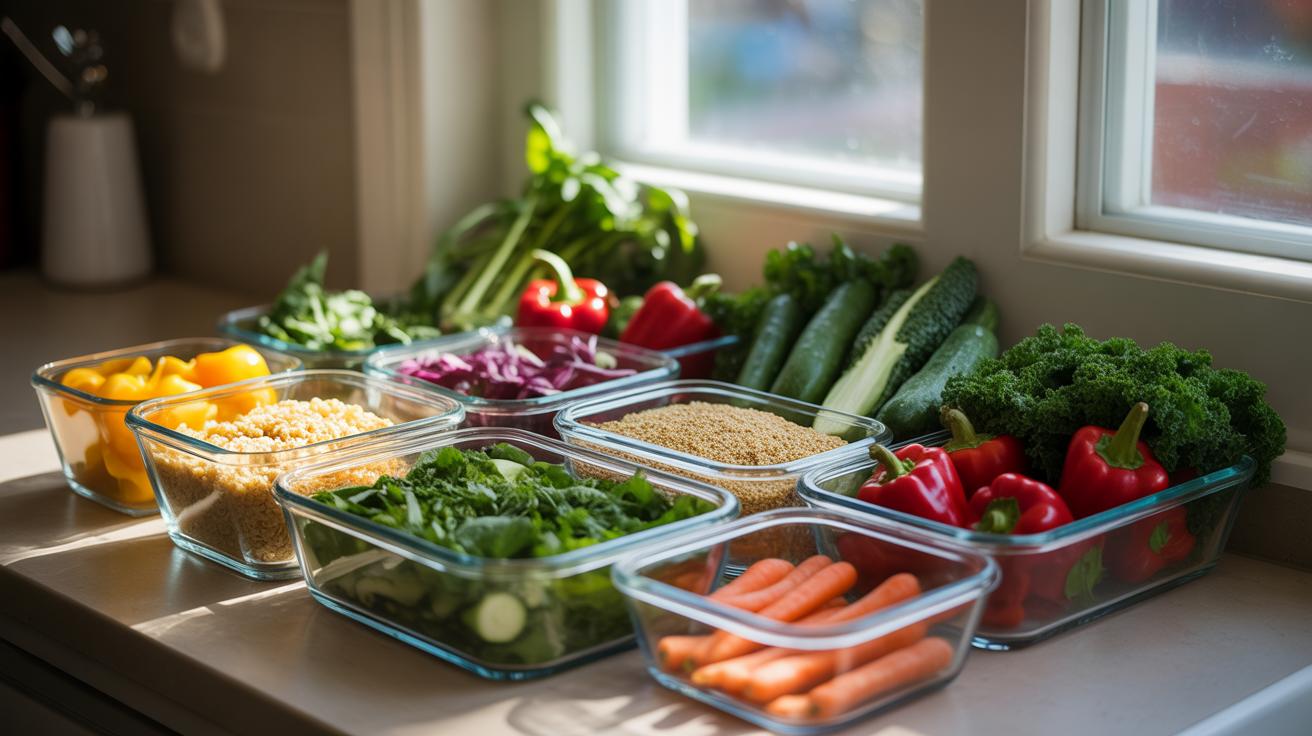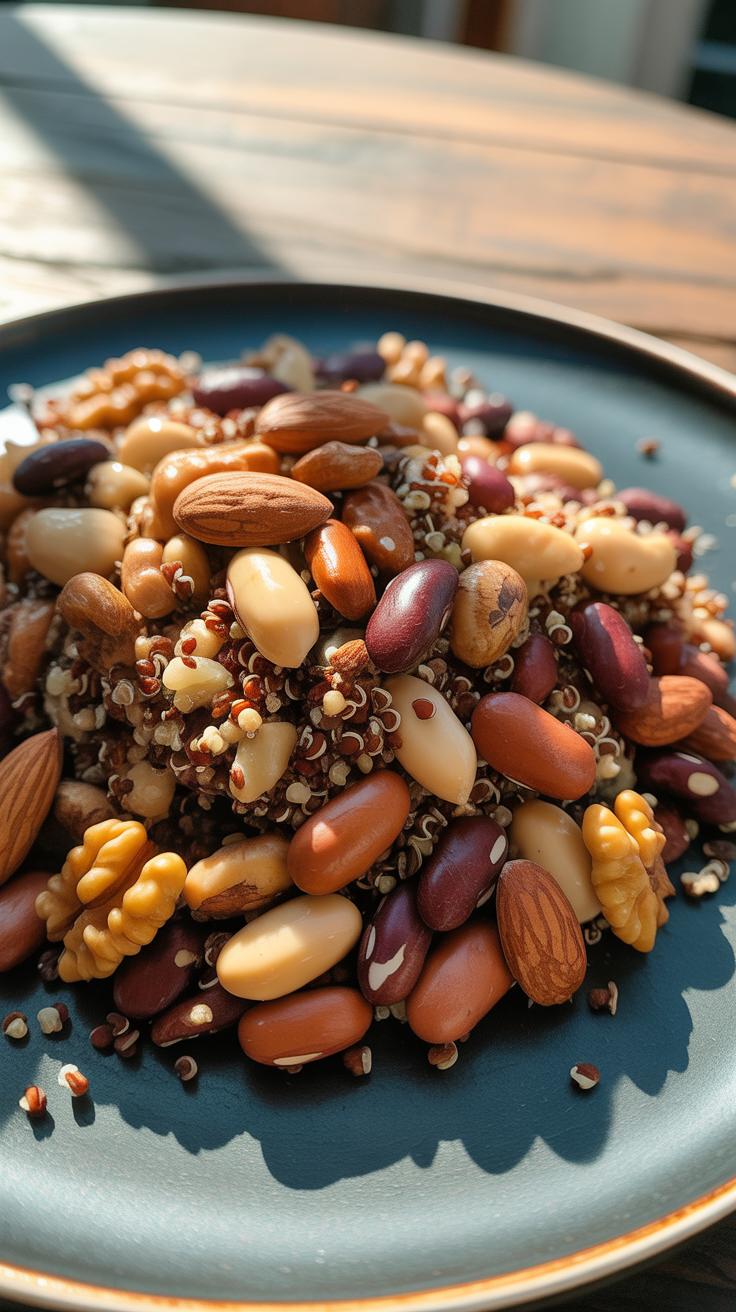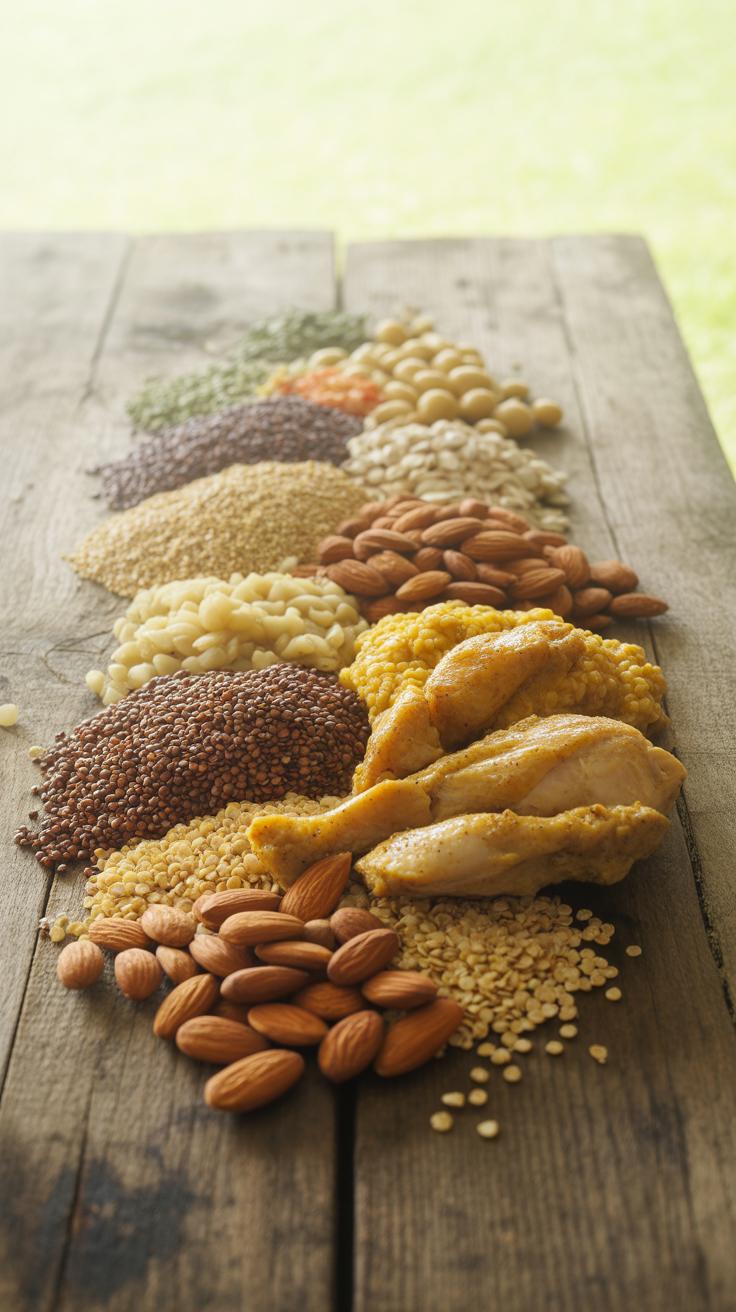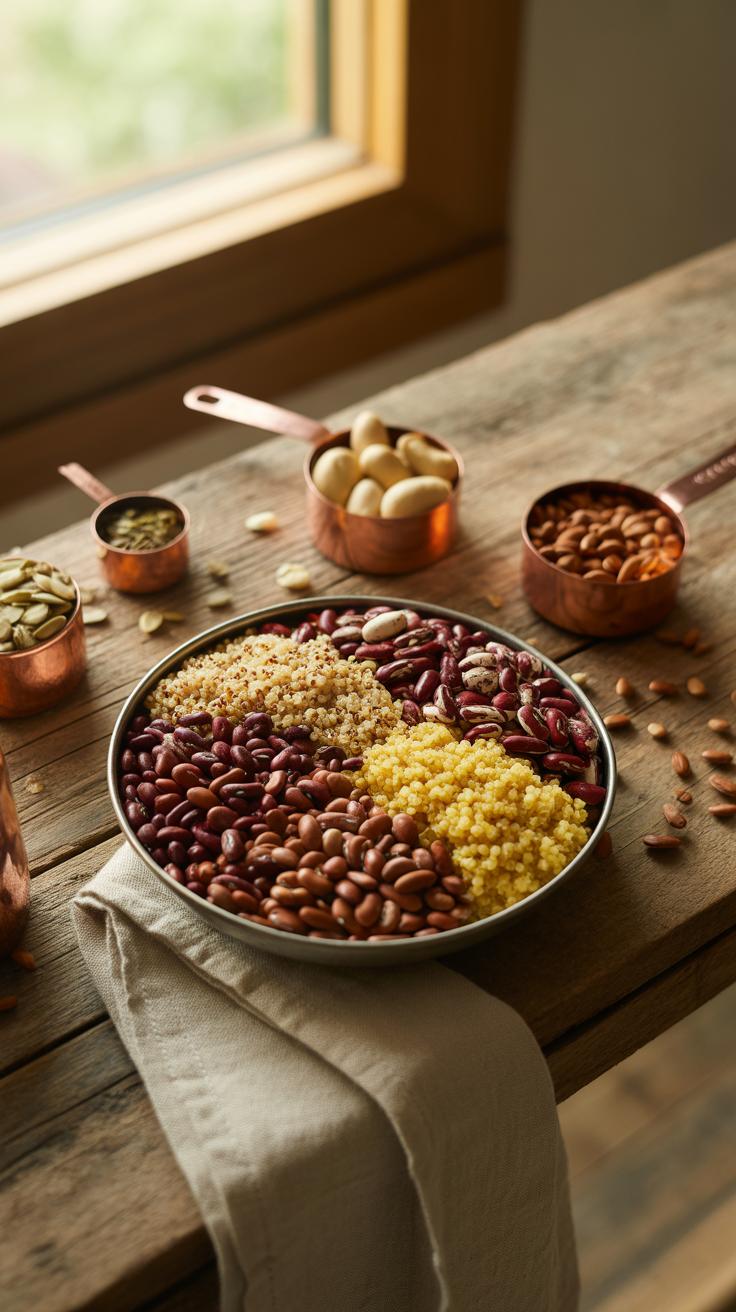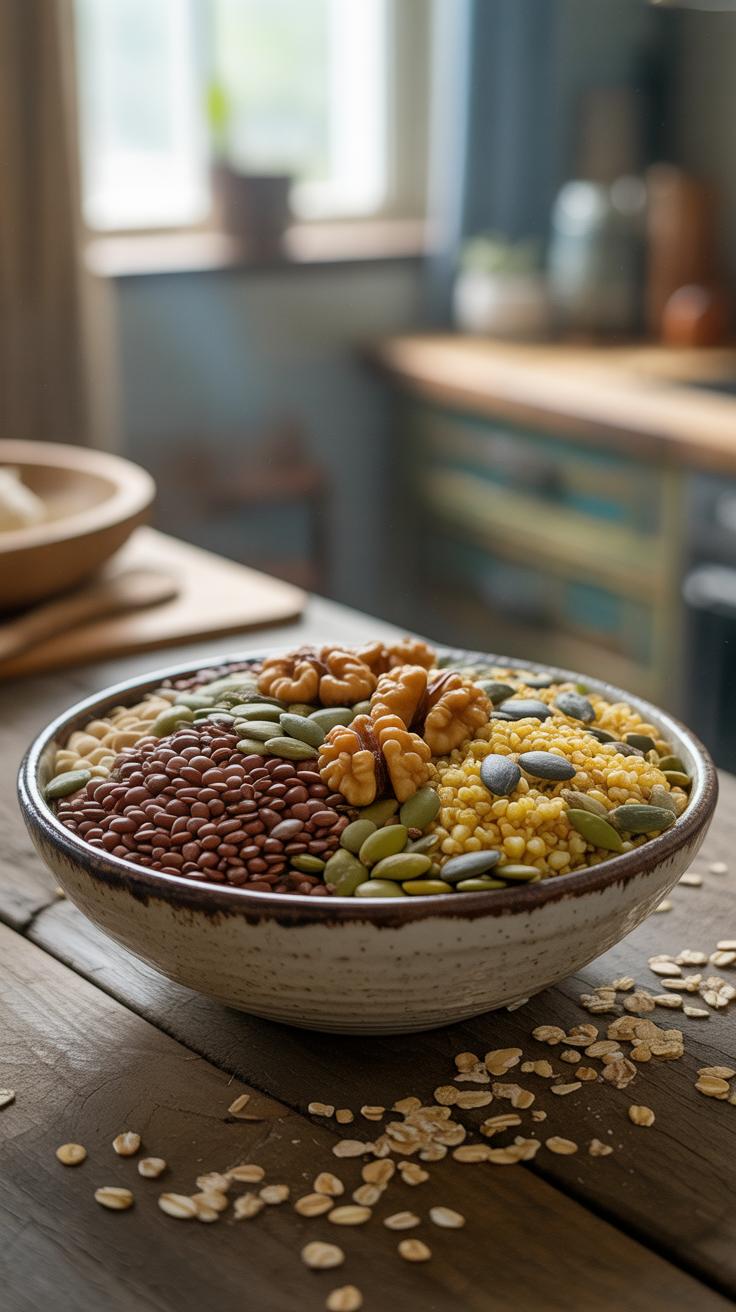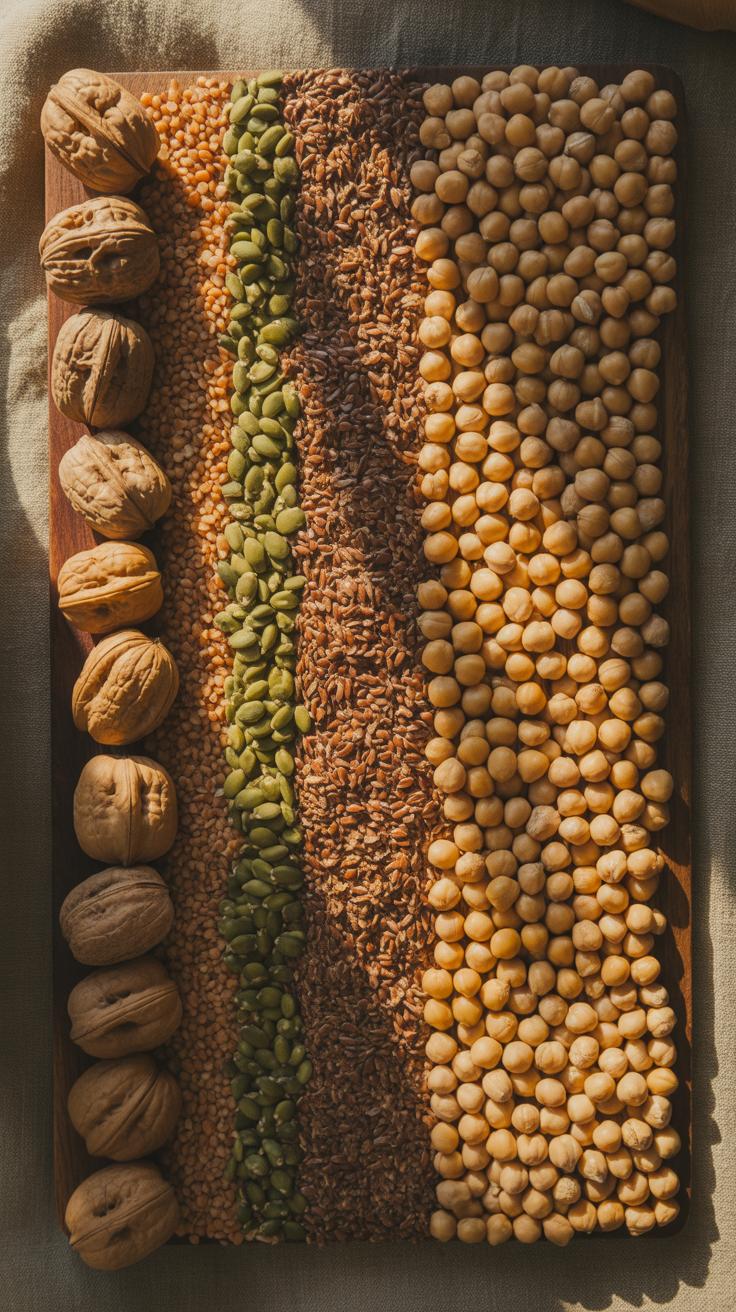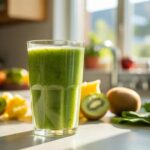Introduction
Protein is essential for your body building and repair. Getting the right protein types and amounts helps you stay strong and healthy. This article presents a complete protein foods list with nutritional values and metrics to help you choose the best foods for your needs.
You’ll learn which foods offer the most protein, understand the concept of complete proteins, and find out how to evaluate protein quality by using simple measures. With this info, you can plan meals that support your fitness and health goals effectively.
What Makes Protein Complete
A protein earns the label “complete” when it contains all nine essential amino acids in the amounts your body needs. These essential amino acids cannot be made by your body, so you must get them from food. That’s why completeness matters—the right balance supports muscle repair, enzyme production, and other key functions.
Essential amino acids include histidine, isoleucine, leucine, lysine, methionine, phenylalanine, threonine, tryptophan, and valine. Without enough of even one, your body may struggle to synthesize proteins properly, which could slow growth or weaken immune response.
Animal sources like eggs, dairy, meat, poultry, and fish typically offer complete protein. Some plant sources, such as quinoa, soy, and buckwheat, also qualify. Knowing which foods provide complete protein helps you craft a diet that supports overall health, especially if you’re active or recovering from illness. Missing this piece can leave gaps in your nutrition that might not show immediately but could affect you over time.
Essential Amino Acids Role
There are nine essential amino acids your body needs every day, but can’t make. Each plays a unique role. For example, leucine supports muscle synthesis, while tryptophan helps regulate mood.
If you miss one or more of these amino acids regularly, your body can’t build complete proteins. This can result in symptoms like fatigue, poor concentration, or slower healing. Sometimes people who rely heavily on limited plant foods might overlook this, but blending foods can help.
It’s not just about eating protein in general—it’s getting the right mix. Lack of a single essential amino acid can slow protein production, almost like missing a critical tool when assembling something. Your diet should aim to cover all bases if you want to stay well.
Animal vs Plant Proteins Comparison
Animal proteins usually provide all essential amino acids in good amounts and are easy to digest. That’s why their protein quality often scores higher in tests that measure biological value and digestibility.
Plant proteins can be less straightforward. Many lack one or more essential amino acids—like rice, which is low in lysine, or beans, which may be low in methionine. But when eaten together, say rice and beans, they complement each other to create a complete protein profile.
Digestibility varies too. Some plant proteins come with fiber or antinutrients that slow absorption. You might need to eat a bit more or prepare them differently. Despite this, with careful planning, plant-based diets can meet protein needs without major gaps. It just requires a bit more attention and variety than relying on animal proteins alone.
Evaluate Protein Quality Metrics
When you’re looking at different protein foods, understanding their quality matters as much as the quantity. That’s where protein quality metrics come in. They aren’t just numbers pulled from thin air; they measure how well a protein meets human needs, especially in terms of essential amino acids and digestibility. The Protein Digestibility Corrected Amino Acid Score (PDCAAS) is one popular way to do this. It combines two key things: the amino acid profile of a protein and how much of it your body can actually absorb.
To calculate these metrics, scientists analyze the protein’s amino acid composition and compare it to a reference pattern—usually the essential amino acid needs of young children, who are considered the most sensitive group. Then, they factor in digestibility, often tested in animals or humans. The result gives you a percentage score. A higher PDCAAS score, close to 1 or 100%, implies a protein that supplies all essential amino acids in sufficient amounts and is well-digested. For example, egg whites and milk proteins often score near perfect, while some plant proteins don’t fare as well.
These metrics help show which foods give you the most usable protein per serving. But it’s not just academic; if you rely heavily on one protein source, knowing its quality can help you avoid gaps in your diet. Maybe you think all proteins are the same, but these metrics suggest otherwise. Still, no single number can tell the whole story.
Protein Digestibility Score Explained
The PDCAAS was developed to offer a clear way to compare protein quality across foods, focusing on human nutrition. It basically looks at how the amino acid content matches requirements and adjusts for digestibility. If a protein lacks one essential amino acid, it lowers the score. Likewise, if your body can’t digest the protein well, the score drops.
Let’s consider soy protein and beef. Soy tends to have a PDCAAS around 0.9, reflecting some limitations in certain amino acids and slightly lower digestibility. Beef usually scores a perfect 1.0, meaning it hits all the marks. This makes PDCAAS useful for comparing plant and animal proteins, pointing out why some plant proteins might need to be combined to provide complete nutrition. Yet, it’s not a flawless ranking system. Sometimes, proteins may have a high PDCAAS but lack other nutritional benefits, or vice versa.
Limitations and Alternatives
PDCAAS has its quirks. For one, it truncates scores at 1.0, so a protein richer than the standard in essential amino acids can’t score higher. Also, it doesn’t account for how processing or cooking affects protein quality, which can be a big deal in the kitchen. Plus, the test is based on older digestibility methods that may not reflect modern insights.
Because of these issues, newer methods like the Digestible Indispensable Amino Acid Score (DIAAS) are gaining ground. DIAAS measures digestibility at the end of the small intestine, providing more accurate data about available amino acids. It doesn’t cap scores like PDCAAS. But it’s more complex and less widely used so far.
For you as a consumer, this means—don’t rely solely on one number. Think about how diverse your protein sources are and how foods are prepared. Mixing different proteins and varying your diet can naturally make up for any limitations these scores might miss. Protein quality metrics are useful tools, but your eating habits and preferences also play a huge part in getting enough quality protein.
Top Animal Protein Foods List
Animal-based protein sources vary widely, but some stand out for their protein density. When you’re thinking about common options, it’s mostly meats, fish, dairy, and eggs. Here’s a quick snapshot of protein content per 100 grams to give you an idea:
- Beef (lean): around 26-27 grams
- Lamb: roughly 25 grams
- Chicken breast: about 31 grams
- Pork (lean): near 27 grams
- Salmon: 20-22 grams
- Eggs (whole): 13 grams
- Cheddar cheese: around 25 grams
- Milk (whole): 3.3 grams
- Greek yogurt: 10 grams
Notice how chicken breast often tops the list for highest protein content, especially compared to fattier cuts of meat. Conversely, milk offers quite low protein per 100 grams, but you probably drink more of it, so it adds up differently. Fish varies depending on type—white fish like cod have less protein than oily fish like salmon.
Protein Content in Red and White Meats
Red meats such as beef and lamb generally contain about 25-27 grams of protein per 100 grams. Lean beef usually has around 26-27 grams, depending on the cut and fat content. Lamb is close, but it tends to carry a bit more fat, which dilutes protein slightly.
White meats like chicken have higher protein in lean cuts. For instance, skinless chicken breast has roughly 31 grams per 100 grams, making it one of the densest animal proteins available. Pork falls somewhere in between, closer to red meat numbers but varies with cut.
Cooking affects protein density too. Cooking removes water, concentrating protein—so the protein per 100 grams cooked will be higher than raw. But the total protein amount remains roughly the same, just packed into less weight. That’s why cooked meat usually shows higher protein per 100 grams on food labels.
Dairy and Egg Protein Metrics
Dairy provides a different kind of protein experience. Hard cheeses like cheddar deliver about 25 grams of protein per 100 grams, which is pretty substantial. Softer cheeses usually have less, around 15-20 grams.
Milk is low in protein—usually just 3 to 3.5 grams per 100 ml for whole milk. Skim milk pushes up to about 3.4 grams because there’s no fat diluting the content. Yogurt varies depending on style—regular yogurt has roughly 5 grams per 100 grams, but Greek yogurt, which is strained, can have up to 10 grams.
Eggs, surprisingly, aren’t packed with protein compared to meats, offering about 13 grams per 100 grams (about 6 grams per large egg). Most of that protein is in the white, though the yolk contains essential nutrients that balance the profile.
When you assess these options, the protein content can swing quite a bit depending on preparation and type. Do you prefer a protein-dense chicken breast or a more balanced egg meal? It depends on your goals—and maybe your taste buds, too.
High Protein Plant Foods List
When you look for plant-based protein, there’s more variety than you might expect. Some plants pack a surprising protein punch, making them good options whether you’re vegetarian, vegan, or just trying to eat healthier.
Legumes stand out here. Soy products, such as tofu and tempeh, provide around 15-20 grams per 100 grams. Lentils offer about 9 grams, black beans 8-9 grams, and green peas roughly 5 grams per 100 grams. These aren’t just filler foods; they supply substantial protein, which is why many vegetarians rely on them as main protein sources.
Then there are nuts and seeds. Almonds have roughly 21 grams of protein per 100 grams, walnuts closer to 15 grams, and sunflower seeds about 20 grams. Seeds like chia and pumpkin seeds also contribute notably, often around 20-25 grams. Grains shouldn’t be overlooked either. Wheat, oats, and quinoa typically provide 12-15 grams per 100 grams, and their versatility makes them practical daily staples.
It’s interesting how these plant foods complement each other—it’s not always obvious that a handful of almonds or lentils in your salad can boost your protein intake significantly. So, when planning meals, mixing legumes, nuts, and grains can help cover your protein needs pretty well, even if you don’t eat meat. What’s your experience with these? Have you counted on any particular plant protein source more than others?
How to Combine Proteins in Meals
Creating a complete protein by combining plant sources can be surprisingly simple, though it sometimes feels a bit tricky at first. The idea is to pair foods that together provide all essential amino acids your body needs. While each plant source might fall short in one amino acid, a complementary food fills in the gap. You don’t have to get it perfect every single meal—your body pools amino acids over time—but having a reasonable balance most days definitely helps.
Think about classic examples like rice and beans. Rice is low in lysine but has enough methionine, while beans have plenty of lysine but less methionine. Together, they create a more complete amino acid profile. Another familiar combo is hummus with pita bread; similarly, peanut butter on whole grain bread works, too. They work because their amino acid profiles compensate for each other’s limitations.
Here’s a little checklist to guide your meal planning:
- Pick a legume or pulse—think lentils, chickpeas, or black beans.
- Add a grain or seed—rice, quinoa, or even corn.
- Include some nuts or seeds when possible, like pumpkin seeds or almonds.
- Mix different plant proteins over the course of the day rather than stressing over each meal.
- Don’t forget vegetables, which contribute modest protein and important nutrients.
It might feel like a bit of trial and error at first, but soon you’ll find pairing proteins becomes second nature. Maybe give a few combos a try and see what feels satisfying—both in taste and texture.
Protein Intake Recommendations
Protein needs differ a lot depending on who you are and what you do. Age, weight, and activity level all play key roles here—you can’t just pick a number out of thin air. For most adults, a general rule is about 0.8 grams of protein per kilogram of body weight daily. So, if you weigh 70 kg, that’s roughly 56 grams a day. But wait, it’s not always that simple.
Kids usually require less protein relative to their weight, but growing bodies need a steady supply to support development. Teenagers? They often need more, especially during growth spurts. On the flip side, elderly individuals might benefit from slightly increased intake to help preserve muscle mass.
Then there are active people and athletes. Their needs rise significantly. If you work out regularly or train hard, your protein requirement might jump to 1.2–2.0 grams per kilogram, depending on the intensity. Truthfully, sometimes it feels like guessing—there’s no one-size-fits-all number.
When illness strikes or during pregnancy, protein needs shift again. The body’s repair processes accelerate, so ramping up intake supports recovery and growth. Pregnant women, for example, generally require about 1.1 grams per kilogram to nourish both themselves and their baby. Intense training periods also push demands higher, but how much more often causes debates.
How do you figure out what’s right for you? A simple calculation is to multiply your weight in kilograms by a factor suited for your lifestyle—0.8 for average adults, up to 2.0 for heavy exercisers. Notice how flexible these recommendations are? It’s a starting point, not a rigid rule.
Protein Supplement Options
When it comes to protein supplements, you’ve probably heard of whey, soy isolate, and pea protein. Whey remains a popular choice for many—it’s a dairy-derived protein that usually packs around 20 to 25 grams of protein per scoop. It digests quickly, making it great for post-workout recovery. But not everyone can or wants to consume dairy, so soy isolate is a common plant-based alternative. It typically provides a similar protein content, about 20 to 24 grams per serving, and is often used for muscle repair and general supplementation.
Then there’s pea protein, which maybe some overlook, but it’s gaining traction. Pea protein delivers roughly 15 to 25 grams per serving and fits well for those avoiding dairy and soy. Plus, it tends to be easier on digestion for quite a few people. Each type brings its own mix of amino acids, so your choice can depend on allergies, dietary restrictions, or just what fits your routine best.
Protein powders come in different forms, mainly isolates, concentrates, and textured proteins. Isolates go through extra processing to remove more fat and carbs, leaving nearly pure protein—often above 90%. Concentrates keep some of those other elements, so they usually hover around 70-80% protein. They might taste richer but have slightly fewer grams of protein per scoop. Textured proteins, meanwhile, are less about powders and more about replicating the texture of meat in plant-based products. These are used more in cooking rather than shakes.
Choosing between them often depends on your goals. For example, if you want protein with minimal calories and lactose, isolates usually work better. Concentrates might be fine if you’re not so strict about macros and prefer something less processed.
When should you actually turn to protein supplements? Some scenarios make more sense than others. If you struggle to meet your protein needs through food alone, supplements can be an easy fix. Athletes or people training intensely might find them useful to support muscle repair without having to eat bulky meals right after exercise. Sometimes, supplements help when you’re traveling, busy, or just don’t feel like cooking.
Still, it’s worth being cautious—protein powders should complement your diet, not replace whole foods. Using them smartly means keeping track of your overall intake and staying hydrated. And while timing matters, like taking whey soon after workouts, everyday supplementation is flexible enough to fit many schedules. Thought about what really fits your lifestyle before making them a daily habit.
Check Protein Labels Effectively
Reading protein labels isn’t always straightforward. You might spot a number next to “protein,” but what does it really tell you? It’s not just about grams per serving. Look deeper—terms like amino acid score and digestibility can reveal much more about the protein’s quality. For instance, the amino acid score compares the profile of essential amino acids in the food to a reference standard. A higher score means the protein better meets your body’s needs.
Digestibility measures how well your body can absorb and use the protein—without it, the highest protein number means little. Then there’s the protein percentage, which shows the portion of the food’s calories coming from protein. You might find two products with the same protein grams, but the one with a higher percentage usually offers a leaner, more efficient protein source.
Here’s a few things to keep in mind when scanning labels:
- Check the serving size carefully—protein numbers can be misleading if servings differ.
- Look for products with higher amino acid scores—typically animal proteins rate well, but some plant proteins are improving.
- Consider digestibility—terms like PDCAAS or DIAAS hint at this, although they’re rare on everyday labels.
- Compare protein percentages if you want lean sources, especially useful for packaged meats or protein bars.
- Don’t ignore accompanying nutrients—sometimes a high-protein food comes with added sugars or fats, lowering overall quality.
I often find myself hesitating between two protein bars in the store, but focusing on these label details helps. It narrows down choices beyond just the numbers. Wouldn’t you say scanning labels effectively lets you avoid surprises and choose proteins that truly fuel you?
Common Protein Diet Mistakes
Many people think simply eating more protein will solve their nutritional needs, but that’s not always true. One common error is relying heavily on incomplete protein sources without pairing them properly. For example, eating beans alone might seem like a good protein boost, but if you don’t combine them with grains or other foods, you could miss out on some essential amino acids.
Portion sizes are another tricky area. You might assume that piling your plate with chicken or tofu equals better results, but oversized servings can lead to wasted calories or strain on your kidneys over time. Smaller, balanced portions often work better, especially when paired with other nutrient-rich foods.
Overestimating Protein Needs
You might believe that more protein equals more muscle or better health, but that’s not always the case. Many adults consume well beyond what they need. Excess protein can stress the liver and kidneys, particularly if hydration isn’t sufficient or if there are pre-existing health issues. The truth is, most people meet their protein requirements with moderate intake.
Targeting over 2 grams of protein per kilogram of body weight daily rarely helps, except in some highly active or clinical settings. Eating too much protein might even crowd out other important nutrients in your diet without adding real benefits. It’s a balancing act, not a race.
Missing Key Amino Acids
Vegetarian or restrictive diets may risk missing some essential amino acids if food choices aren’t varied. Plant proteins often lack one or more essential amino acids, so relying on a few types of foods can cause gaps. Without these, your body can’t build proteins effectively, impacting muscle repair, immunity, or hormone function.
Mixing different protein sources during the day is usually enough to cover all bases. But skipping this step can lead to fatigue or slower recovery, which isn’t always obvious immediately. It’s something you might overlook until you start noticing subtle signs that your diet isn’t quite right.
Track Your Protein Intake Easily
Keeping track of your protein intake doesn’t need to be complicated. One simple way is to keep a food diary. Writing down what you eat makes it easier to see not just how much protein you get, but also where it comes from. You might notice patterns—like relying too much on processed meats or missing out on plant proteins. It’s a bit like holding up a mirror to your diet, which can feel a bit awkward at first, but also really revealing.
Using a food diary can also help clarify the quality of your protein sources. Are you mixing in complete proteins? Or maybe your protein comes mostly from snacks? Jotting this all down forces you to think about the balance, not just the numbers. Plus, seeing your meals laid out can inspire tweaks that otherwise might escape your notice.
Nowadays, apps make this process much less tedious. Apps like MyFitnessPal or Cronometer let you log meals quickly, with huge food databases showing exact protein amounts and other nutrients. Some apps even break down the amino acids in your meals, which can be useful if you want to focus on protein quality. I know some people find entering every bite tedious, yet many find these tools motivating. Just scanning barcodes or saving common meals cuts down on time, too.
There are also dedicated protein trackers that send reminders and give daily goals tailored to your weight and activity levels. What’s great about these apps is they provide immediate feedback—no guesswork needed. You see your progress in real-time, which can nudge you to adjust if you’re falling short or overshooting.
Do you track your meals now? Or have you tried apps that made it easier? It’s often about finding a balance that fits your routine without feeling like a chore.
Conclusions
Choosing the right protein foods matters for your well-being. Both animal and plant-based sources can provide good protein. Focus on foods with complete proteins for all essential amino acids. Use nutritional values and protein scores to guide your choices.
Remember to vary your diet to cover all amino acid needs over time. With a clear protein foods list and knowledge of quality metrics, you can design meals that fit your goals and taste preferences. Incorporate these insights to build better nutrition habits.

